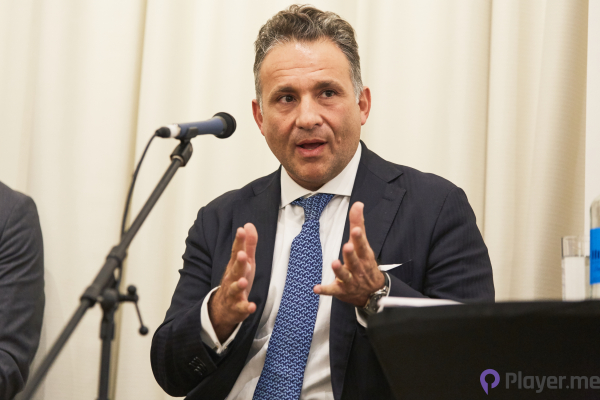Calastone, a prominent global funds network, has released its latest Fund Flow Index (FFI) report, shedding light on the significant shifts in investment strategies that have affected the fund industry. In a year characterised by turbulence in financial markets, the report reveals a noteworthy trend – a growing preference for passive investment strategies over active ones.
Also Read: AI in Finance: Predictive Analytics and Robo-Advisors in the Financial Sector
Investor Behaviour in 2022

The latest FFI report from Calastone paints a comprehensive picture of investor behaviour in 2022. It highlights a challenging year for passive equity funds, which experienced outflows for the first time in Calastone’s record. Despite being considerably larger in terms of assets under management, passive funds saw outflows amounting to £4.45 billion. In stark contrast, their active counterparts faced much smaller outflows of £1.82 billion.
The report emphasises that global index funds bore the brunt of these outflows, losing £3.26 billion in capital. In contrast, active funds, particularly those with an ESG (Environmental, Social, and Governance) focus, attracted net inflows of £8.13 billion. The rising popularity of ESG investments contributed significantly to this trend.
Most of the report focuses on UK-focused equity funds, which witnessed a record £8.38 billion outflows in 2022. Investors demonstrated an unwavering aversion to these funds, leading to the second consecutive year of outflows in this category. Other geographical sectors, including European, North American, and Asia-Pacific funds, also experienced outflows.
Also Read: Germany’s Bold Gamble: Substantial Investment Aims to Secure $11 Billion TSMC Chip Plant
Global Funds and Emerging Markets

Despite the challenging environment, global funds continued to attract new capital, primarily driven by the popularity of ESG strategies. Investors added a net £4.87 billion to global funds, highlighting their preference for sustainable investments. Additionally, emerging-market funds enjoyed inflows, and equity income funds performed relatively well, considering the economic conditions.
Investors displayed interest in fixed-income funds, although inflows of £2.89 billion for the year were significantly lower than the previous year. The report suggests that investors may anticipate an end to the cycle of interest rate hikes, positioning themselves for potential bond market rallies.
Mixed asset funds faced challenges, with inflows of £1.16 billion marking their worst performance on Calastone’s record. On the other hand, property funds saw a reduction in outflows, indicating a degree of stability in this asset class.
Edward Glyn’s Insights
Edward Glyn, Head of Global Markets at Calastone, offered insights into the market dynamics. He highlighted the substantial shift towards passive investments in 2022, driven by concerns about central banks’ rate hikes and inflation control. Despite the challenges the fund industry faces, active fund houses found a silver lining: The outflows predominantly affected index funds, which typically have lower fees.
Passive Investments Gain Traction in 2023
In a more recent update, it has been reported that investors continued to favour passive investments in September 2023. Calastone’s Fund Flow Index indicates that investors withdrew £206 million from actively managed equity funds during the month, opting for passively managed portfolios, including index tracker funds. Algorithmic-based investments, such as global index funds, attracted £1.1 billion in inflows as investors reevaluated stock valuations amid volatile bond markets.
The report also highlights regional variations in investment preferences, with some markets showing a stronger inclination toward passive funds. ESG funds remain a remarkable success story in asset management, with investors increasingly embracing these sustainable investment options. However, the adoption of passive ESG funds varies across regions, with Asian investors lagging.
Also Read: Blockchain Backer’s Insight: The Reverse Repurchase Facility and the Fed’s Rate Hike Pause in 2023
COVID-19 Impact
The report briefly reflects on the impact of COVID-19 on investment trends in 2020. It notes that the pandemic initially led to net outflows, followed by a significant inflow of capital into equity funds as vaccine approvals signalled an end to the crisis.
In March 2020, amid the uncertainties surrounding the pandemic’s economic impact, investors withdrew £3.2 billion from UK-based funds. This period saw significant outflows from bond, real estate, and active equity funds, while index-tracking passive funds received substantial inflows.
Calastone’s report, titled ‘Tidal Forces – Can active funds fight the passive flows?’, delves into the global investment landscape, examining the rise of passive strategies and the changing preferences of investors across various markets. The report’s findings indicate a structural shift in investment behaviour, with passive funds gaining prominence in the fund industry.
Edward Glyn’s Perspective on UK Equities

Edward Glyn, Head of Global Markets at Calastone, commented on the persistent aversion to UK equities among investors. He pointed out that investors remained reluctant to invest in the UK market despite attractive valuations, primarily due to concerns about the country’s economic outlook.
Conclusion
In 2022, a pivotal shift towards passive investment strategies challenged conventional active fund management. Passive equity funds saw unprecedented outflows, primarily affecting global index funds. Despite this trend, funds focusing on Environmental, Social, and Governance (ESG) factors attracted substantial inflows, underscoring sustainability’s growing influence.
The fund industry faces uncertainty, prompting investors to reconsider their strategies in response to global events. The rise of passive investments, ESG fund resilience, and regional preferences shape the investment landscape. Calastone, through its FFI report, hopes to guide navigating these transformative times and adapting to an evolving industry.
Frequently Asked Questions
What Distinguishes Passive From Active Investing?
Passive investors hold stocks for potential long-term growth, while active investors monitor stock prices frequently, often aiming for short-term gains.
How Did Active and Passive Funds Perform in the Global and UK-Focused Investment Context?
In 2022, while passive equity funds saw outflows, active counterparts, especially those with an ESG focus, attracted substantial inflows of £8.13 billion. Global funds remained a preferred choice for investors, receiving net inflows of £4.87 billion, primarily driven by ESG strategies. However, UK-focused equity funds faced significant challenges, witnessing a record £8.38 billion in outflows.
What Drove the Preference for Active or Passive Investments?
The report highlighted a preference for passive investments, especially algorithmic-based strategies, and index tracker funds. Investors seemed to reevaluate stock valuations amid volatile bond markets, contributing to the rise of passive strategies. On the other hand, the popularity of ESG-focused active funds indicated a growing consideration of sustainability in investment decisions.





